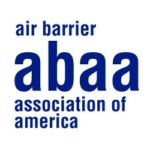
- This event has passed.
Assessing Methodologies for Detecting Water Intrusion in Wall Systems
February 18, 2021 @ 1:00 PM - 2:00 PM EST
Studies by the University of Florida, the Environmental Protection Agency (EPA) and the U.S. Department of Housing (HUD) have revealed that there is a substantial fraction of commercial and residential buildings that have been exposed to moisture resulting in damage or durability problems. Water intrusion into building envelope components leads to a variety of undesirable conditions such as mold, wood rot, corrosion, and aesthetic damage. Tests methods that are presently used to evaluate the amount of water intrusion into a building envelope component are usually qualitative in nature. For example, ASTM E 331, Standard Test Method for Water Penetration of Exterior Windows, Curtain Walls, and Doors by Uniform Static Air Pressure Difference requires that you “observe and record points of water leakage, if any.” This test was originally developed to assess the performance of fenestration products but is commonly adapted to evaluate other enclosure assemblies. However, when it is used for walls, this procedure is limited to recognizing if the moisture is visually observable from the backside of the sheathing. It does not address moisture that is absorbed in the layers of the building envelope component, which could impact the durability of the assembly. Clearly a quantitative means of determining water penetration would improve the quality of this type of test and assist with better understanding the resultant impact on enclosure assemblies.
In 2018-19, ABAA, in conjunction with ORNL, initiated a research project to address this issue. The purpose of that study was to evaluate nine different methods of detecting moisture intrusion through a wall assembly. This presentation will summarize the findings of that project.
Learning Objectives:
- What do standards require regarding the measurement of moisture intrusion today.
- What are other techniques that can be deployed in a wall assembly that can detect moisture intrusion.
- What are the advantages and disadvantages of these measurement techniques.
- What additional work is needed and planned to improve our test standards.
Speaker(s):

André Desjarlais
André Desjarlais is the Program Manager for the Building Envelope and Urban Systems Research Program at the Oak Ridge National Laboratory. He has been involved in building envelope and materials research for over 45 years, first as a consultant and, for the last 30 years, at ORNL. Areas of expertise include building envelope and material energy efficiency, moisture control, and durability. Desjarlais has been a Member of ASTM since 1987 and serves on Committees C16 on Thermal Insulation, D08 on Roofing, and E60 on Sustainability. He is the past Chairman of ASTM Committee C16 and was awarded the title of Fellow in 2011. He has been a member of ASHRAE since 1991 and serves on Technical Committees TC 4.4 on Thermal Insulation and Building Systems, TC 1.8 on Mechanical Insulation Systems, and TC 1.12 on Moisture Control in Buildings, and is past Chairman of TC 4.4. André is also a founding director of the IIBEC/RCI Foundation.
